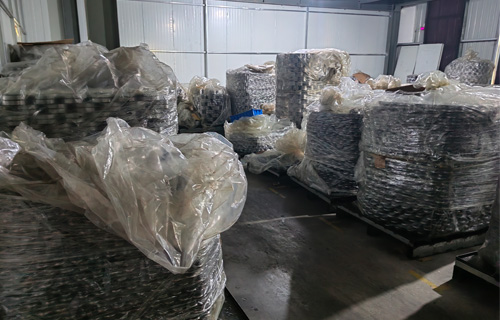
Dec . 17, 2024 22:14 Back to list
srb bearing
Understanding SRB Bearings Key Components in Modern Machinery
In the realm of mechanical engineering, bearings play a crucial role in ensuring the smooth operation of various machinery and equipment. Among the multitude of bearings available in the market today, SRB (Spherical Roller Bearings) hold a significant position due to their unique design and capabilities. This article delves into the characteristics, advantages, applications, and maintenance of SRB bearings, providing a comprehensive overview of their importance in modern engineering applications.
What Are SRB Bearings?
Spherical Roller Bearings (SRB) are a type of rolling-element bearing that features a spherical outer raceway, allowing for angular misalignment between the shaft and housing. This design enables the bearing to accommodate both radial loads and axial loads in two directions. SRB bearings can be found in various sizes, and their adaptability makes them suitable for a range of applications, from heavy machinery to precision instruments.
Key Characteristics
1. Self-Aligning Capability One of the standout features of SRB bearings is their ability to self-align. The spherical shape of the outer raceway allows the inner ring, rolling elements, and cage to adjust to slight misalignments, resulting in reduced friction and wear.
2. High Load Capacity SRB bearings can handle heavy radial loads and moderate axial loads due to the design and arrangement of rolling elements. This makes them ideal for applications that require high load-bearing capabilities.
3. Durability and Longevity The materials used in manufacturing SRB bearings, such as high-carbon chromium steel, enhance their durability. Additionally, optimized surface finishes and heat treatments contribute to long life and reduced maintenance needs.
4. Variety of Designs SRB bearings can come in various designs and configurations. Some are equipped with seals or shields to protect against contaminants, while others have special grease for increased lubrication efficiency.
Advantages of SRB Bearings
- Reduced Maintenance The self-aligning feature and durable construction reduce the need for frequent maintenance checks. This is particularly beneficial in industries where downtime due to bearing failures can be costly.
- Versatility Because of their ability to accommodate load variations and misalignments, SRB bearings are versatile and can be used in diverse applications ranging from construction equipment to conveyor systems.
- Cost-Effectiveness Although SRB bearings might have a slightly higher initial purchase price than other bearing types, their longevity and lower maintenance requirements often translate to lower overall operating costs.
srb bearing

Applications of SRB Bearings
SRB bearings are widely employed in various industries, thanks to their robustness and reliability. Common applications include
1. Industrial Machinery They are frequently used in heavy machinery such as crushers, mills, and conveyors, where they manage substantial loads and harsh operating conditions.
2. Automotive Applications In automotive engineering, SRB bearings are used in different parts of vehicles, including wheel hubs and axles, where they contribute to stability and safety.
3. Mining and Construction Equipment Due to their strength and self-aligning properties, SRB bearings are ideal for equipment subjected to harsh conditions in mining and construction settings.
4. Wind Turbines The renewable energy sector benefits from SRB bearings in wind turbines, where their ability to handle varying loads and misalignments contributes to reliable performance.
Maintenance of SRB Bearings
While SRB bearings are designed for longevity, routine maintenance is still essential to ensure optimal performance. Key maintenance practices include
- Regular Inspections Periodic inspections for signs of wear, misalignment, and contamination help prevent unexpected failures.
- Proper Lubrication Using the right lubricant and maintaining appropriate lubrication intervals can significantly extend bearing life.
- Monitoring Operating Conditions Keeping an eye on the operating conditions, including temperature and load variations, is crucial for timely maintenance and intervention.
Conclusion
In summary, SRB (Spherical Roller Bearings) are invaluable components in many engineering applications due to their unique design, robustness, and versatility. Their ability to self-align, coupled with a high load capacity, makes them particularly well-suited for heavy-duty environments. With proper maintenance, SRB bearings can provide years of reliable service, contributing significantly to the efficiency and productivity of modern machinery. As industries continue to evolve, the significance of such advanced bearing technology is likely to grow, making SRB bearings a cornerstone in the field of mechanical engineering.
Latest news
-
Grooved Ball Bearing Design and Functionality
NewsJun.04,2025
-
Concrete Mixer Bearing Load Capacity Testing
NewsJun.04,2025
-
6004 Bearing Dimensions in Robotic Joint Designs
NewsJun.04,2025
-
Advantages of Single-Row Deep Groove Ball Bearings
NewsJun.04,2025
-
Applications of Deep Groove Ball Bearings in Automotive Systems
NewsJun.04,2025
-
Innovations in Bearing Pressing Machine Design
NewsJun.04,2025
